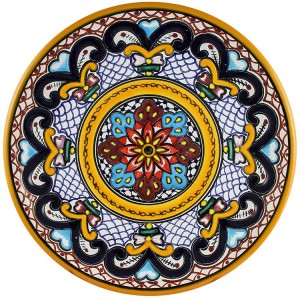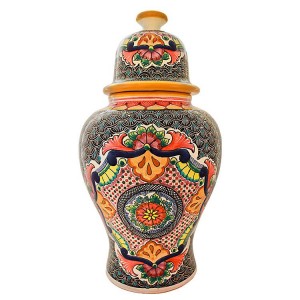 Works of art good enough to eat off – that’s the essence of Talavera pottery.
Works of art good enough to eat off – that’s the essence of Talavera pottery.
The Mexican pottery, which has been around for 400 years and is primarily made in Puebla City, is an artistic and practical achievement. Vases, cups, plates, serving bowls, and tiles, called azulejos, are some of the items I saw being made in Uriate Talavera factory where the highly regarded, expensive pottery is hand made. The factory, which was established in 1824, is one of Puebla city’s most renowned because it is one of the few authentic Talavera workshops left today. Talavera is one of Mexico’s most unique items, making it a worthwhile gift to bring home.
Puebla City is located sixty miles southeast of Mexico City, making it a convenient hop, skip, and a jump away – and a convenient escape – from Mexico City, which is the world’s largest. Puebla City, which is also the capital of the same name state, is the country’s fourth largest urban center. Approximately two million people live there. The residents, who call themselves poblanos, live in the most European of all of Mexico’s colonial cities. The Spanish established and planned the 16th century city from the ground up, rather than building it within an existing indigenous community. They did this because the location was on the main route between Mexico City and Veracruz, which was at that time the most important port in the country. Puebla City is situated at a height of 7,000 feet above sea level and is blessed with a temperate, year round climate.
While the Spanish may have first introduced the highly decorative art from their home country when they settled in the heart of Mexico, diverse artistic styles, including Moorish and Oriental cultural nuances transformed the colonizer’s craft to what it is today. The Moorish influence of cobalt blue patterns on white appeared on Mexican pottery around the late 15th century, while the Oriental styles of animals and floral designs were first seen in the mid-16th century. To be authentic, Talavera pottery (named after a town in Spain) must be hand-painted in intricate designs using natural dyes derived from minerals. The colors used include blue, black, yellow, green and reddish pink. During a ninety-minute tour of the factory, we learned just how long it takes to make these detailed works of art. And while the pottery is expensive to purchase, even at the point of production, our tour helped us understand why. The factory usually offers free tours that are shorter, but our group of writers was interested in learning minute details about how the pottery is made.




